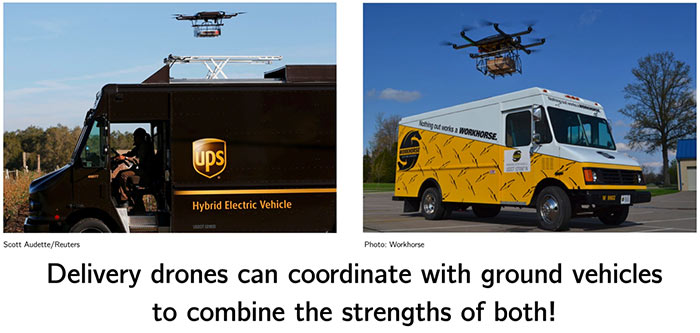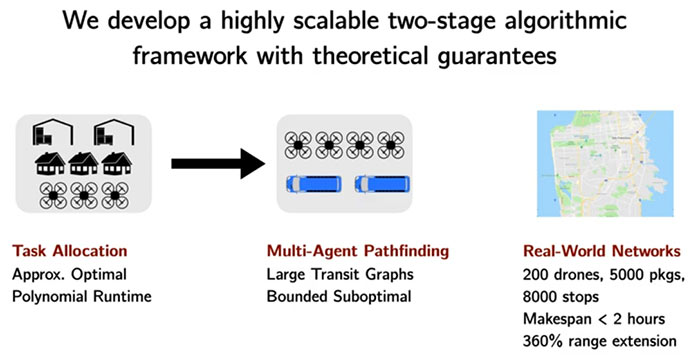The expansion of delivery drone use is held back by a number of factors. Perhaps the two biggest blocks to progress and wider adoption of deliver drones are; the limited travel distance of these battery powered devices (which depends on their payloads too), and the regulations that mean they can't fly freely in some areas - some city centres of example. If drone use could be more widespread, they could facilitate faster more efficient eCommerce and even help ease congestion by removing the need for as many delivery trucks and vans on the roads.

Stanford University's SISL labs have been pondering over the drone delivery problem and published a white paper outlining its proposed practical solutions. A talk by SISL researchers on the topic, at the IEEE International Conference on Robotics and Automation (ICRA) 2020 this week, was titled Efficient Large-Scale Multi-Drone Delivery using Transit Networks.

In brief, the researchers sought to control a large fleet of delivery drones operating in a broad urban area. The drones would save energy, and boost their operable range significantly, by hopping on and off public transport networks like busses and trams. Of course this requires a comprehensive algorithmic framework to coordinate everything; delivery routes, with timing, and efficiency concerns.
To build a working algorithm, the researchers took a two layer approach. The first layer "assigns drones to package delivery sequences with a near-optimal polynomial-time task allocation algorithm," and the second "executes the allocation by periodically routing the fleet over the transit network while employing efficient bounded-suboptimal multi-agent pathfinding techniques tailored to our setting".

In experiments in the San Francisco and Washington DC areas, SISL researchers worked with 500 drones delivering 5,000 packages and the asset of public transport systems featuring up to 8,000 stops. Commodity hardware fitted to the drones could calculate package delivery routes in just a few seconds. Probably most importantly the drones extended their delivery ranges by between 170 and 360 per cent, thanks to being able to hop on and off public transport.
In the future the SISL research and its scope might expand to include robotic ground transport.






